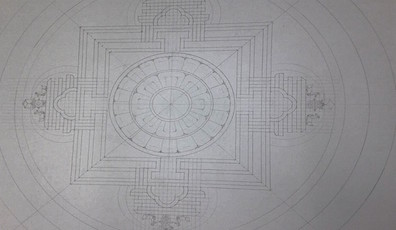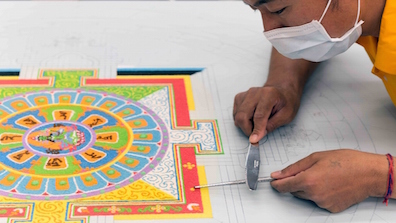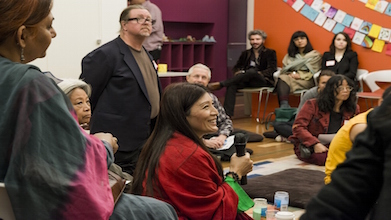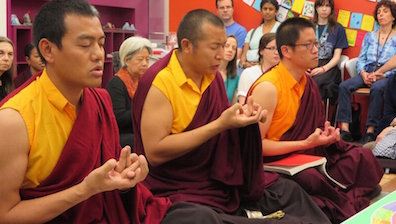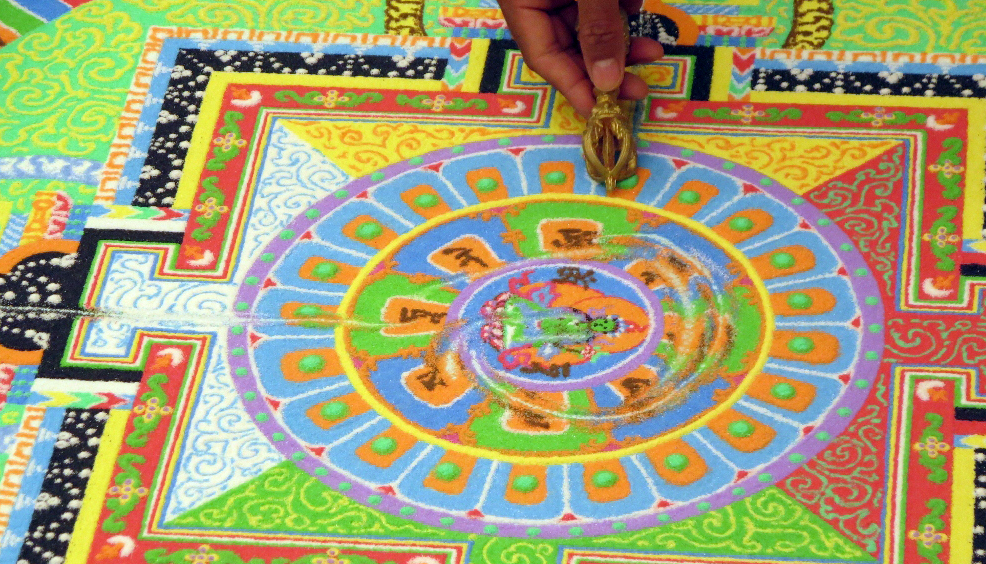
Last fall, the Rubin Museum of Art’s Education team hosted a weekend of open houses for various audiences including K-12 educators, university professors, and families. Throughout the weekend, over 150 educators, professors, and families came to watch three Tibetan Buddhist monks create a sand mandala dedicated to Green Tara, a Buddhist deity and protector. To accompany the creation of the mandala, the Rubin Museum’s Education Department presented a series of activities, talks, and tours to demonstrate the many ways that we use mandalas for our school, university, and family programs. Below you can find a recap of the weekend, in pictures.
